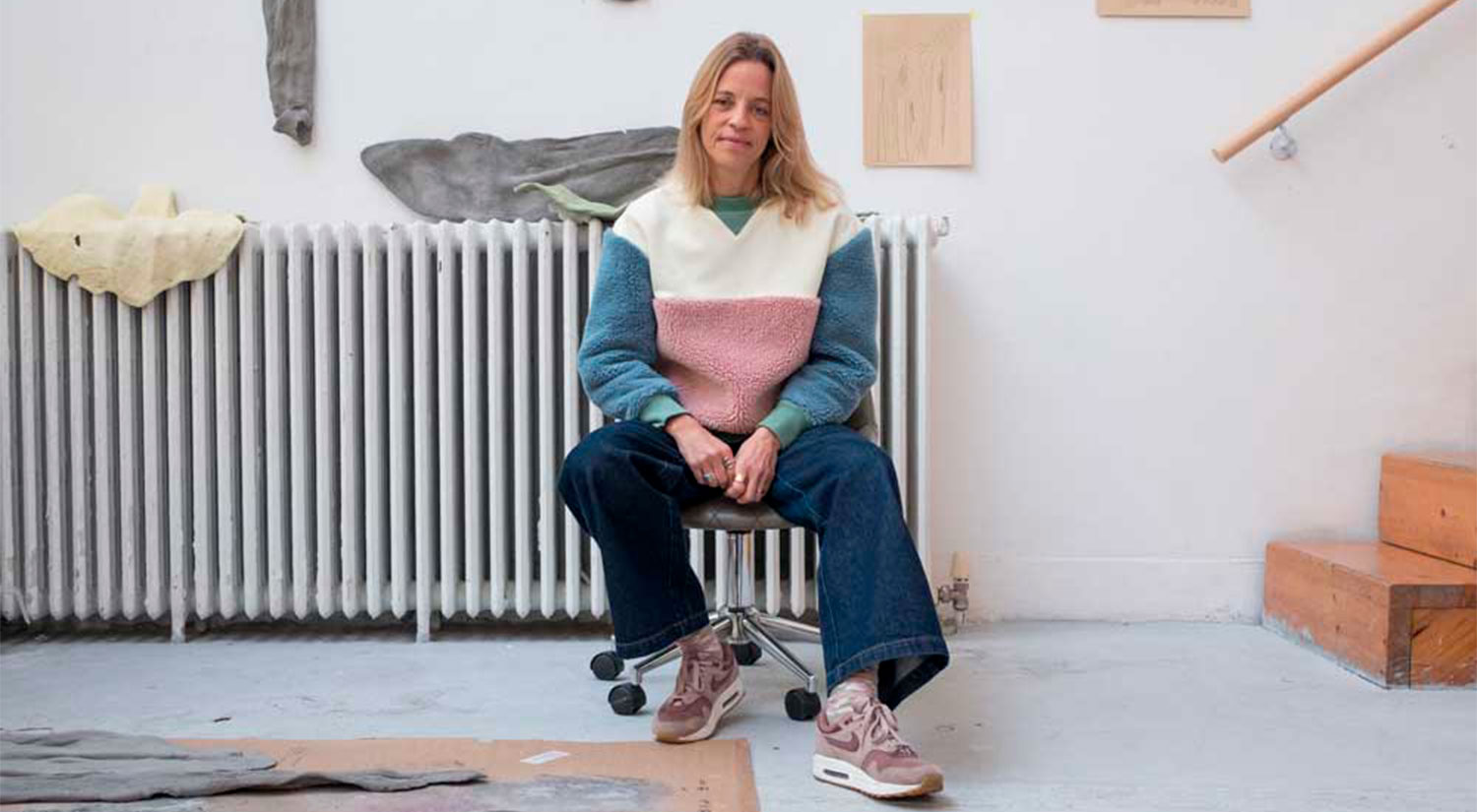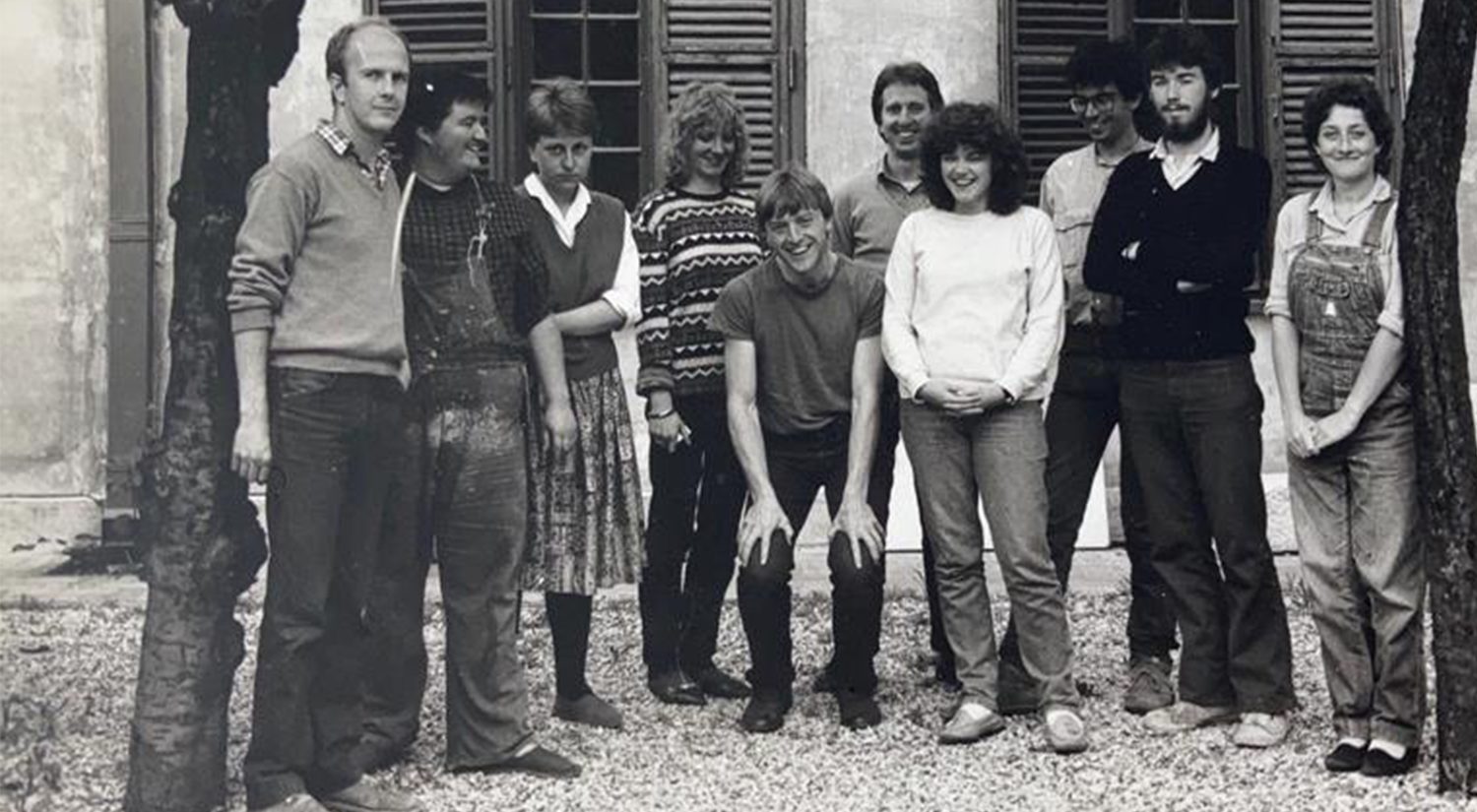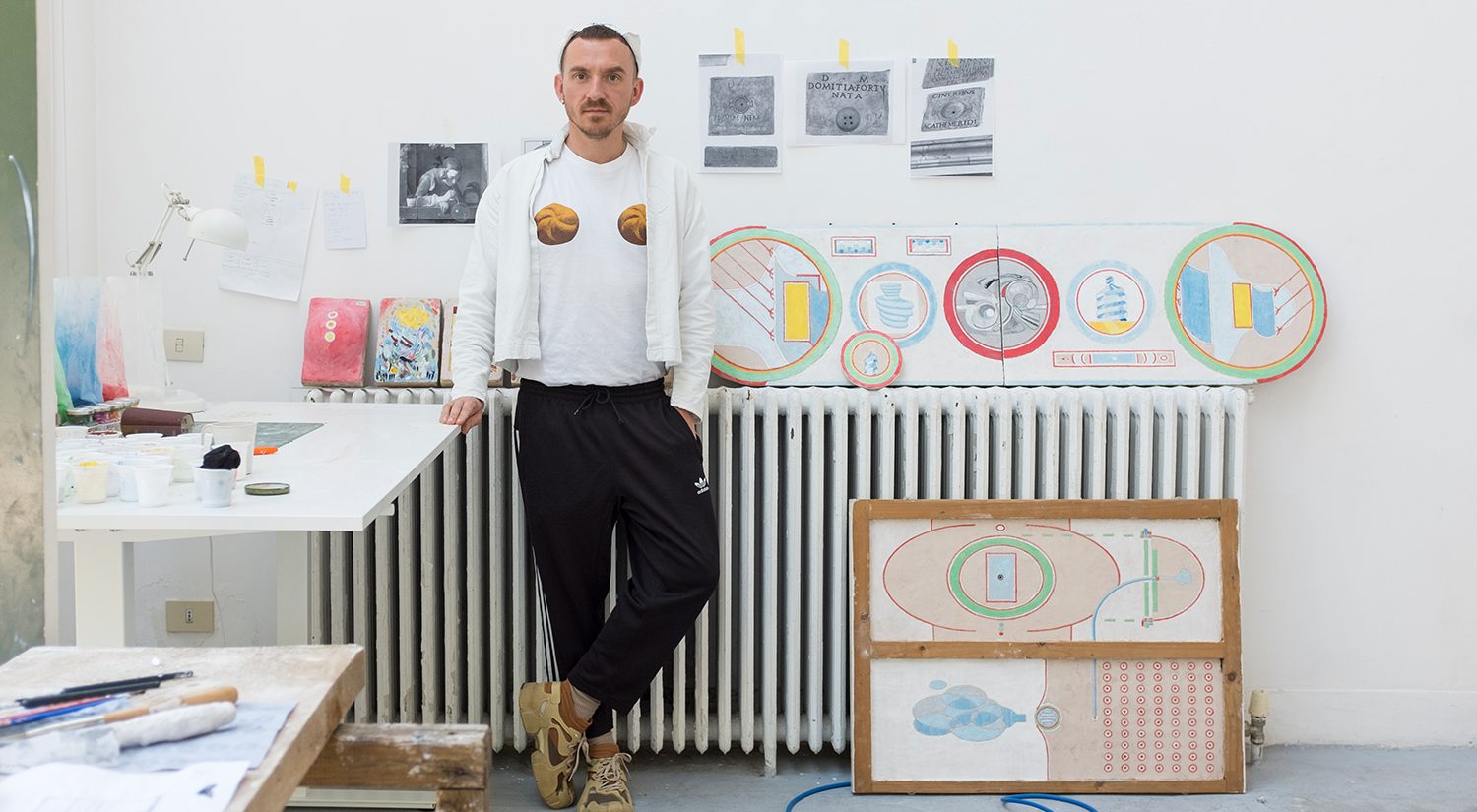An interview with Laura White, winner of The Ampersand Foundation Fellowship, in which she speaks about the work she has produced during her residency at the BSR from September–December 2022, ahead of the Autumn Open Studios.
During your nine-month residency you’re exploring the materiality of Roman food, with a particular interest in artisanal processes. Could you tell us about your methods and processes related to this?
I find myself drawn to the food markets in Rome, how food is displayed and handled, watching people prepare food – cutting vegetables, slicing and portioning meat and fish, the passing of goods from producer to consumer. I am learning food processes such as handmade pasta techniques through the eyes and hands of food experts and spend time reflecting on my eating experiences in restaurants, on the streets and in the BSR kitchen, all of which gets digested and absorbed into my studio practice and writing.
I am exploring different food processes, from curing meat to making pasta. Learning methods from experts while also throwing away the rule book. I recently cured pancetta, that surprisingly for my first attempt was pretty good. I’m now thinking of all sorts of other meats and vegetables I can cure without being too bound to a recipe book. This is also my approach to making pasta and pizza bases, handling the dough – stretching, folding, squeezing and ripping.
There is no straight translation of these foodie experiences into my art practice, but through the handling of materials in the market, the kitchen and the studio I am continually investigating and pushing the materials I use, often to the point of collapse to test their limits. It is only when things break and collapse that I really understand how a material behaves.

Image: Nuovo Mercato Esquilino. Rome, November 2022
On your website tenderfoot you wrote that your research “will be a two way exchange between food and sculpture production”. What are the common points between these different languages and how are you developing them?
My way into both food and sculpture is through an immersive material engagement. Whether making pasta for eating or manipulating dough to make sculpture I am focused on the experience of my body in relation to these materials, the processes learnt from those with specialist knowledge, such as a butcher, a chef, and what happens when these hands on skills are tested, improvised, challenged or ignored. How extensive handling reveals detailed and hidden qualities in a material, which I choose to capture or destroy.
Food and sculpture are experienced in many ways differently, such as the experience of a material inside the body when consumed – mouth, stomach, while sculpture extends beyond the body free to disconnect from its direct food references and requirements, to take on new narratives such as a sculptural and aesthetic language and relationships between objects, viewer and the space.
Moving between the table, where I’m make pasta for consumption, and the floor where I’m make sculpture, (although I feel the pasta on the table is as much sculpture as those on the floor!) I apply and shift my hands-on skill and techniques from one experience into the other. Stretching, rolling, tearing dough on different scales with different intentions. It is as much a shift of the head as it is the hands – food to art and back to food, with thoughts about, value, consumption and food commodification. Dough is handled in so many different ways across cultures to make bread, pasta, flatbreads… It is a language that connects people.
One of the reasons I like to use materials such as dough is for its accessibility, its cheap and humble ingredients (flour and water) that are familiar and everyday, opening up an empathy and physical connection between artworks and viewer.
Somewhere before, between and after the table dough (for making pasta) and floor dough (to make sculpture) comes my writing, which I publish on my website Tenderfoot (www.tenderfoot.co.uk). These written unravelling’s on material engagements are a means to delve in, unpack and question my encounters with places and the stuff in them, whether that be my regular visits to the roman food markets, walking on black basalt cobbled streets or making pasta for residents at the BSR.

Image: work in progress. British School at Rome Studio. Dough, leek skin, stainless steel table and sugar cane. November 2022

Image: Pasta and meat curing. British School at Rome. Oct-Nov 202











